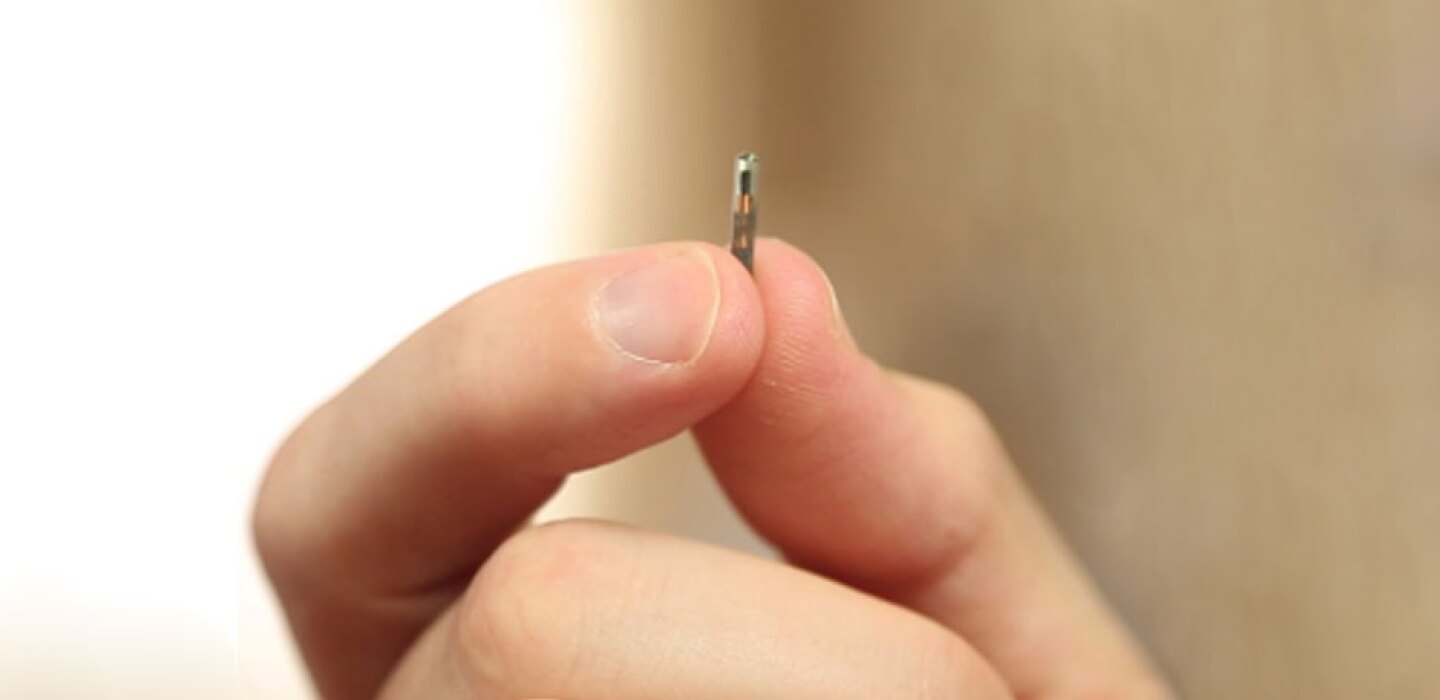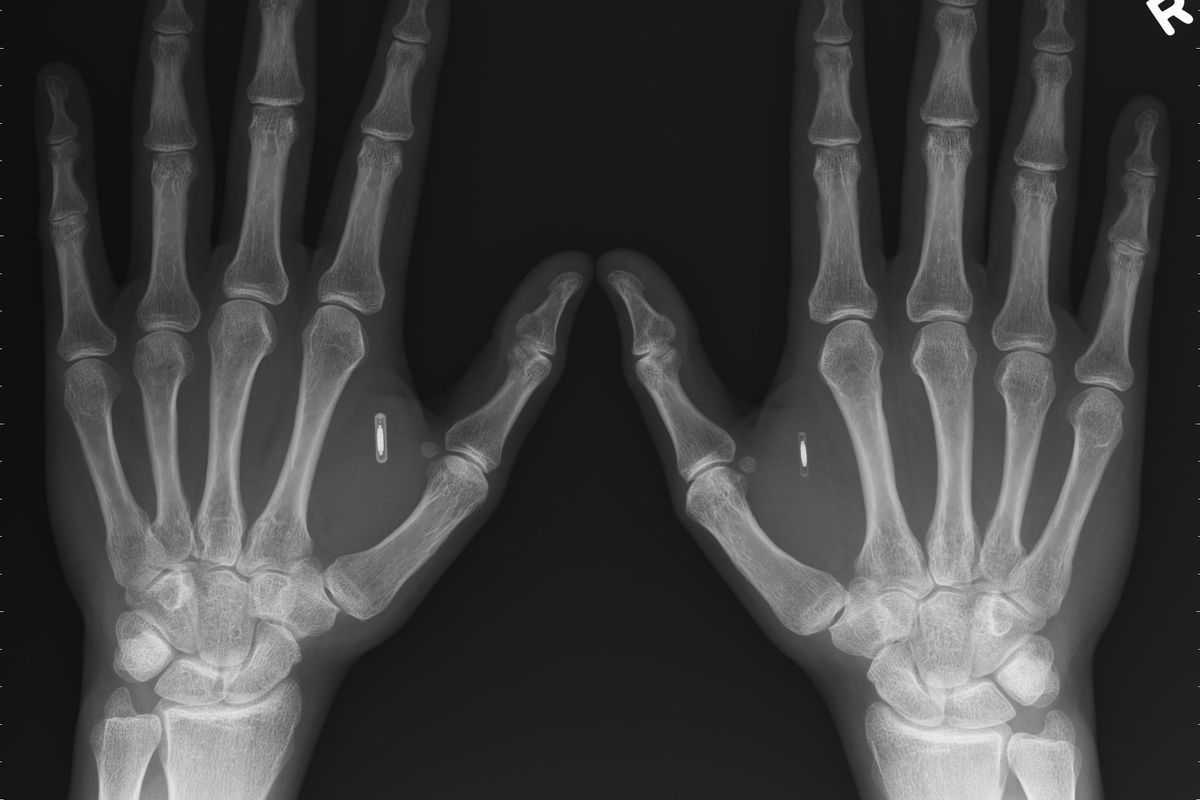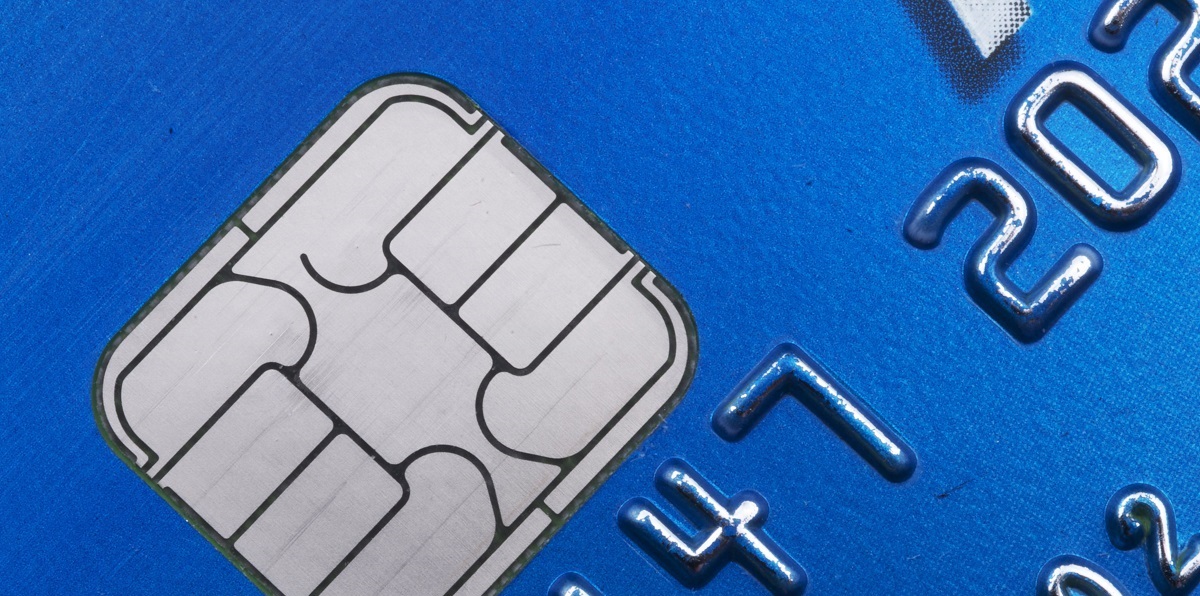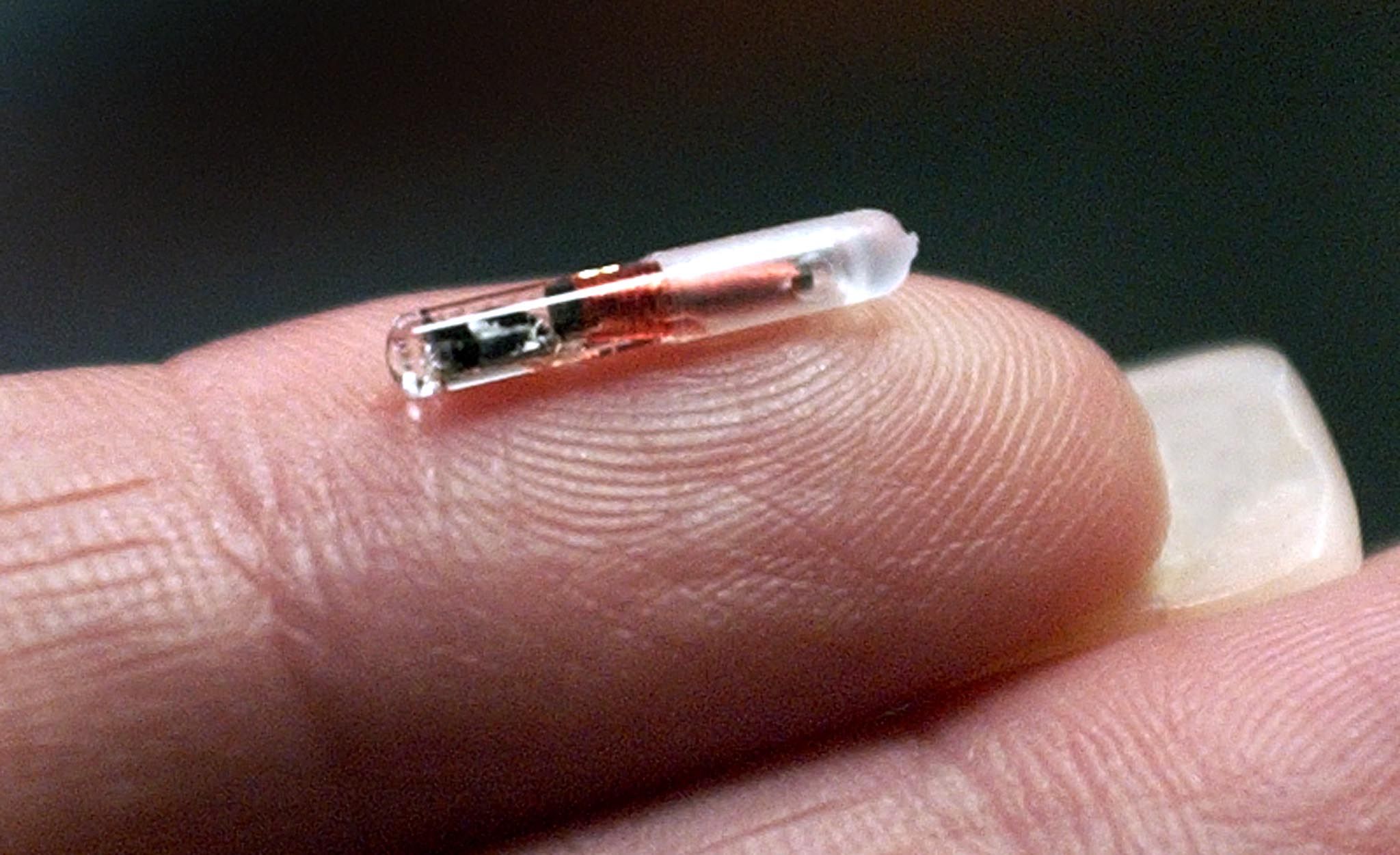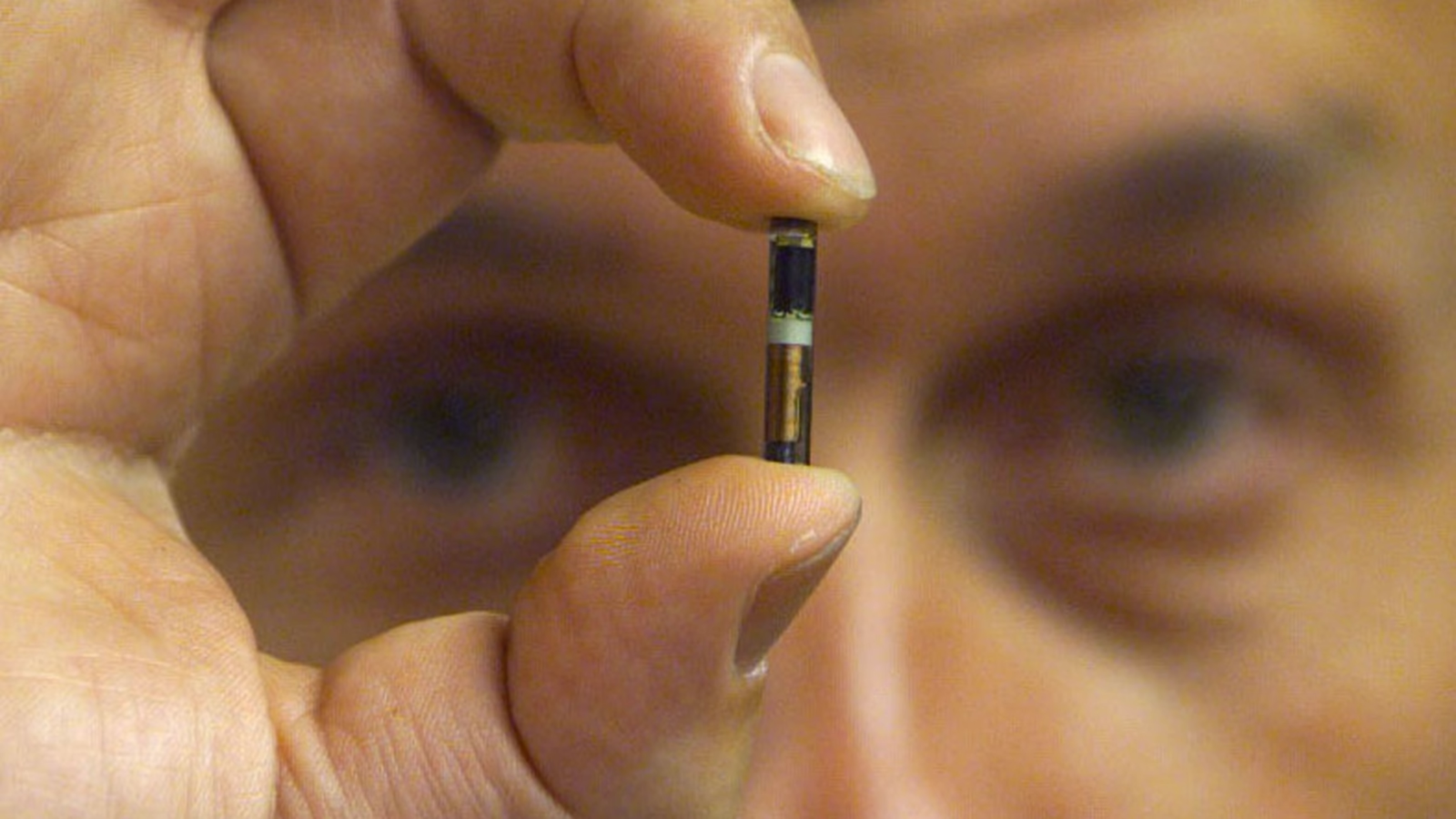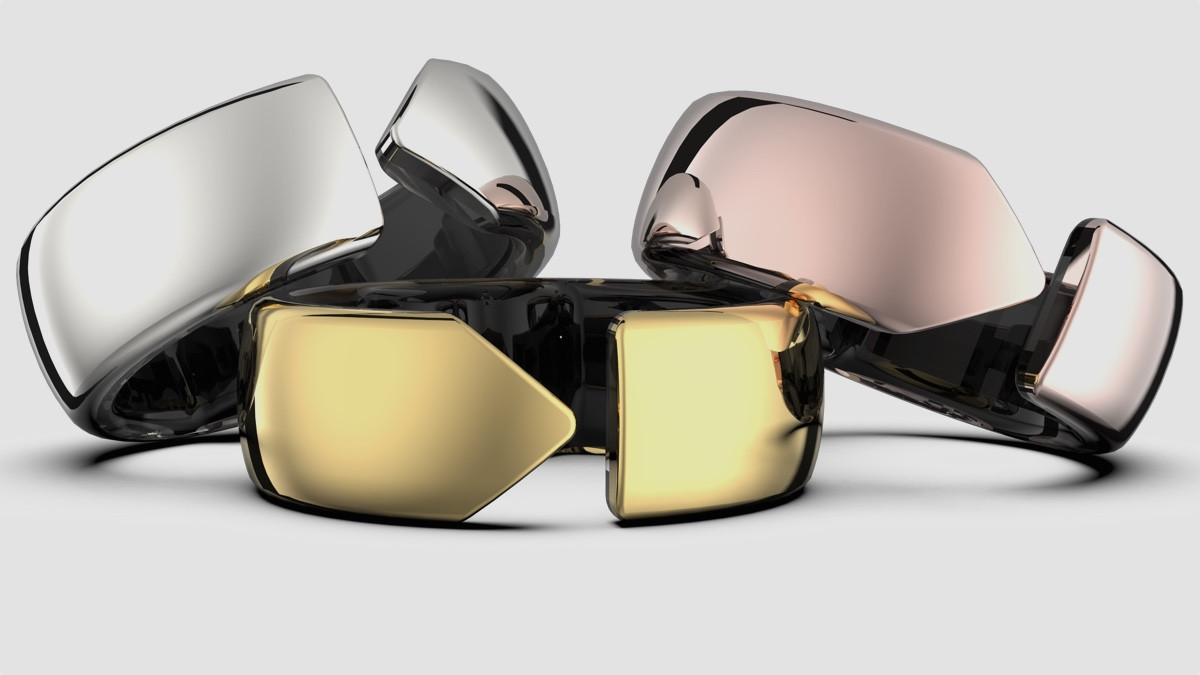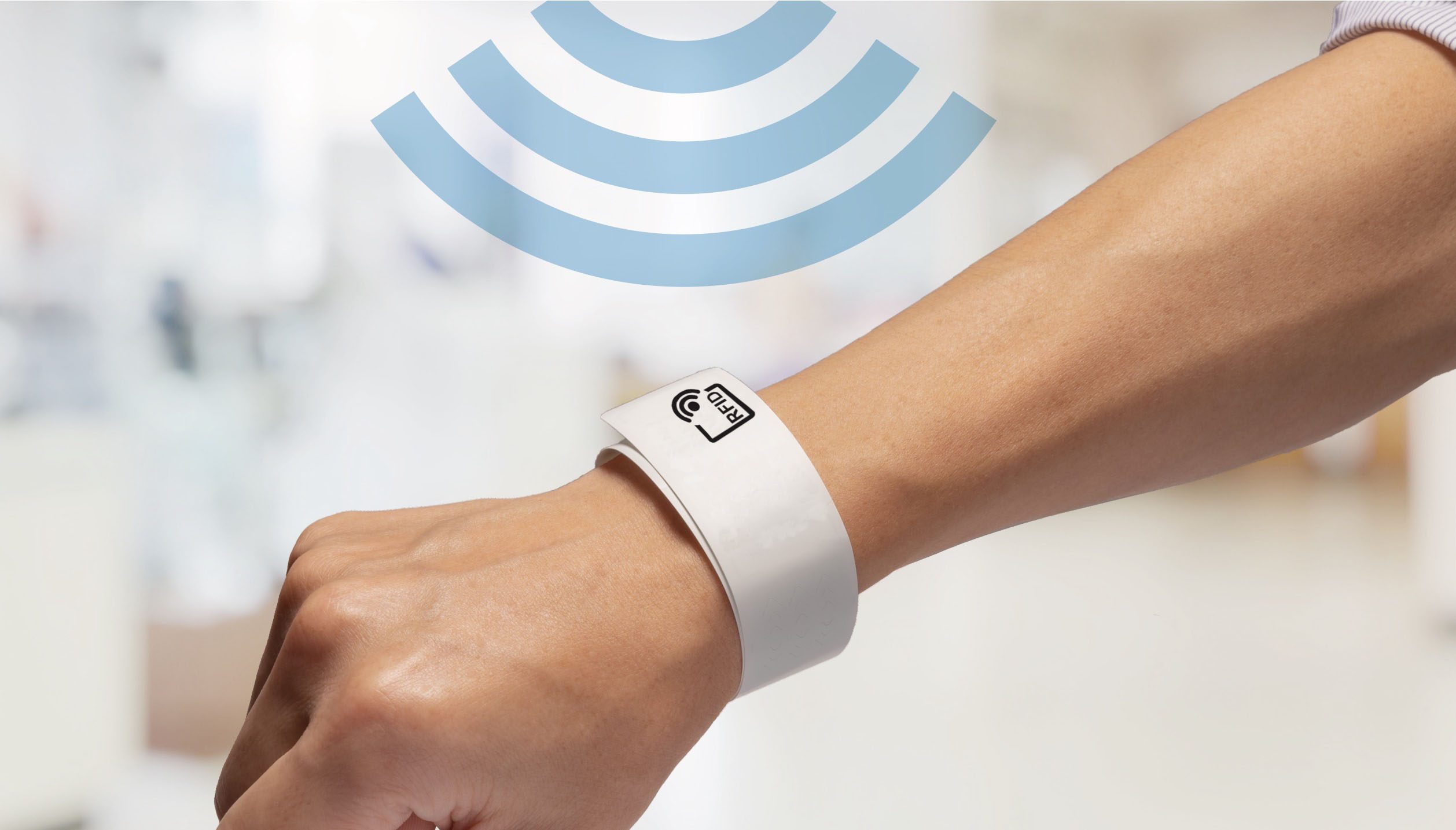Introduction
When it comes to technological advancements, size often plays a significant role. The smaller a device or component, the more versatile and inconspicuous it becomes. This is particularly true for RFID (Radio Frequency Identification) chips, which have undergone a remarkable evolution in size over the years.
RFID chips are tiny electronic devices that use radio waves to communicate information wirelessly. They consist of a microchip and an antenna, enabling them to transmit and receive data. These chips have revolutionized various industries, from inventory management and supply chain logistics to access control and contactless payment systems.
As technology has advanced, so too has the size of RFID chips. What once started as large, bulky devices has gradually been miniaturized to the point where they are almost microscopic. This reduction in size has opened up new possibilities and applications for RFID technology.
In this article, we will explore the evolution of RFID chip size, focusing on the smallest RFID chips available today. We will also discuss the applications for these tiny chips and the challenges faced in miniaturizing them. Finally, we will take a glimpse into the future of RFID technology and the potential developments in chip size.
Without further ado, let’s delve into the world of small RFID chips and discover just how tiny these technological marvels have become.
What are RFID chips?
RFID (Radio Frequency Identification) chips are small electronic devices that use radio waves to transmit and receive data wirelessly. They consist of a microchip and an antenna, housed in a small enclosure. The microchip stores and processes data, while the antenna allows the chip to communicate with RFID readers or other devices equipped with RFID technology.
RFID technology operates on the principle of electromagnetic coupling. When an RFID chip comes within range of an RFID reader, the reader emits radio waves that power the chip and activate its functionalities. The chip then sends back a response, usually containing specific information such as identification numbers or sensor data.
There are two main types of RFID chips: passive and active. Passive RFID chips do not have their own power source and rely on the energy transmitted by the RFID reader to function. Once activated by the reader’s radio waves, the chip uses that energy to power its operations and transmit data. Active RFID chips, on the other hand, have their own power source, typically a battery. This allows them to have a longer range and perform more complex functions, but it also makes them slightly larger in size.
RFID chips are versatile and can be embedded in a variety of objects, such as clothing, products, ID cards, or even living beings. They have numerous applications across different industries, including inventory management, supply chain logistics, access control, asset tracking, and contactless payment systems.
One significant advantage of RFID technology is its ability to read multiple chips simultaneously, without the need for direct line-of-sight. This makes it highly efficient for tracking and identifying large quantities of items in a short amount of time. It has significantly improved the efficiency and accuracy of inventory management systems, reducing manual labor and human errors associated with traditional barcode scanning methods.
Now that we have a basic understanding of RFID chips, let us explore the fascinating journey of their size evolution and how they have become smaller and more advanced over time.
The evolution of RFID chip size
The evolution of RFID chip size has been a remarkable journey of miniaturization and technological advancement. In the early days of RFID technology, the size of the chips was significantly larger compared to what we have today.
Early RFID chips were relatively large, often the size of a coin or even larger. They were bulky and had limited functionalities. However, as technology progressed, engineers and researchers focused on reducing the size of RFID chips while improving their performance.
One of the driving factors behind the miniaturization of RFID chips was the need for increased deployment options. By making the chips smaller, companies could integrate them into a wider range of products and objects without compromising design or functionality.
Over time, advancements in semiconductor technology and manufacturing processes allowed for the creation of increasingly smaller transistors and circuits. This, in turn, contributed to the shrinking of RFID chip size. Additionally, advancements in antenna design and materials also played a vital role in reducing the overall dimensions of RFID chips.
As a result, today’s RFID chips can be as small as a grain of rice or even smaller. Some manufacturers have managed to develop RFID chips that measure only a few millimeters on each side. This reduction in size has made it possible to seamlessly integrate RFID technology into a wide variety of products, from tiny electronics to wearable devices and even injectable tags for animals or humans.
The miniaturization of RFID chips has also led to advancements in their performance. Smaller chips can now offer improved read range, faster data transfer rates, and enhanced data storage capacity. This has opened up new possibilities for applications in areas such as healthcare, retail, transportation, and even IoT (Internet of Things) devices.
Today, tiny RFID chips are being utilized in innovative ways. They are embedded in clothing to track inventory, implanted in pets for identification purposes, and used in contactless payment systems for quick and secure transactions. The possibilities are endless, thanks to the continuous evolution of RFID chip size.
In the next section, we will delve into the smallest RFID chips available today and explore their fascinating applications in various industries.
The smallest RFID chips available
The race to create the smallest RFID chips has led to remarkable breakthroughs in miniaturization. Today, we have RFID chips that are so tiny they can fit on the head of a pin or even smaller. Let’s take a look at some of the smallest RFID chips available in the market.
Nano-sized RFID chips, measuring just a few millimeters in size, have become a reality. Manufacturers have pushed the boundaries of technology to create chips that are incredibly small without sacrificing performance.
One example of tiny RFID chips is the “mu-chip” developed by Hitachi. This chip measures only 0.4 millimeters by 0.4 millimeters, making it one of the smallest RFID chips ever produced. Despite its minuscule size, the mu-chip can store a unique identification number and transmit it wirelessly to an RFID reader within a range of several centimeters.
Another notable small RFID chip is the “Micro-Machined Chip” or MMC. Developed by a research team at the University of Michigan, the MMC is even smaller than the mu-chip, measuring just 0.3 millimeters by 0.3 millimeters. It utilizes innovative manufacturing techniques to create ultra-small features and high-performance antennas, allowing for reliable data transmission.
Some RFID chips have reached an astonishing level of miniaturization, moving beyond millimeter-scale to reach sub-millimeter dimensions. These chips, often referred to as “microchips,” can be as small as 0.1 millimeters or less. They are primarily used in applications where size constraints are critical, such as RFID tags for microscopic objects, medical implants, or even tracking insects and small animals.
The ultra-small size of these RFID chips brings numerous advantages. They can be discreetly embedded in products, making them unobtrusive and easy to incorporate into various industries. For example, in the healthcare sector, tiny RFID chips can be used in medication tracking to ensure the proper distribution and usage of pharmaceuticals.
The smallest RFID chips are also finding applications in the field of IoT. With their compact size, they can be seamlessly integrated into wearable devices, smart appliances, and other connected devices. This allows for the convenient monitoring and tracking of assets or individuals, enhancing safety, efficiency, and productivity in various domains.
As technology continues to advance, it is likely that RFID chips will become even smaller and more sophisticated. The innovation in chip design, manufacturing processes, and materials will further push the limits of miniaturization, opening up new possibilities for the applications of these tiny wonders.
In the following section, we will explore the diverse applications that leverage the power of tiny RFID chips.
Applications for tiny RFID chips
The advancements in miniaturization and the availability of tiny RFID chips have opened up a myriad of applications across various industries. Let’s explore some of the key areas where these minuscule wonders are being put to use.
1. Inventory management: Tiny RFID chips have revolutionized inventory management by providing a more efficient and accurate way to track and locate items. Attach these chips to products or packaging, and you can easily monitor their movement within a facility or throughout the supply chain. This significantly reduces manual labor and speeds up stocktaking processes.
2. Asset tracking: Organizations can now track and manage their valuable assets with ease using tiny RFID chips. From expensive equipment in hospitals to library books, these chips allow for real-time monitoring and streamline asset management, ensuring optimal utilization and minimizing loss.
3. Access control: In the field of security, small RFID chips enable convenient access control systems. They can be embedded in access cards or key fobs, allowing authorized individuals to enter restricted areas or unlock doors with a simple wave or tap.
4. Supply chain logistics: The logistics industry has greatly benefited from the use of tiny RFID chips. By attaching these chips to containers, packages, or even individual products, companies can track shipments in real time, monitor inventory levels, and streamline the entire supply chain process.
5. Contactless payment: The adoption of contactless payment systems, such as RFID-enabled credit or debit cards, has increased dramatically in recent years. Tiny RFID chips embedded in these cards allow for quick and secure transactions with just a simple tap on a payment terminal.
6. Healthcare: In healthcare settings, small RFID chips are used in various applications, such as patient identification, medication tracking, and asset management. These chips can be attached to wristbands, medical devices, or even pharmaceutical packaging, ensuring accurate patient identification and improving safety and efficiency in healthcare workflows.
7. Animal tracking: With the tiny size of RFID chips, pet owners and farmers can easily track and identify their animals. These chips can be implanted under the skin, providing a unique identification code that can be scanned by veterinarians or animal control agencies, facilitating reunions and ensuring proper care.
8. Smart retail: Retailers are leveraging the power of tiny RFID chips to create seamless shopping experiences. They can be embedded in products, allowing for automated inventory management and personalized customer interactions. RFID-enabled fitting rooms, for example, can suggest complementary items based on what customers bring in for try-on.
The applications for tiny RFID chips are truly diverse and continue to expand as technology progresses. Their small size, combined with wireless communication capabilities, offer endless possibilities for improving efficiency, enhancing security, and creating more seamless and connected experiences in various industries.
In the next section, we will discuss the challenges faced in miniaturizing RFID chips and the efforts being made to overcome them.
Challenges of miniaturizing RFID chips
While the miniaturization of RFID chips has led to significant advancements, it is not without its challenges. Shrinking these tiny devices to such small sizes presents various hurdles that need to be overcome. Let’s take a closer look at the challenges faced in miniaturizing RFID chips.
1. Power limitations: As RFID chips become smaller, space for a power source, such as a battery, becomes limited. Passive RFID chips rely on the energy transmitted by the reader, which can restrict their range and functionality. Active RFID chips with their own power source can overcome this limitation, but their larger size hinders miniaturization efforts.
2. Antenna design: The size reduction of RFID chips also affects the design and performance of the antenna. The antenna needs to be compact yet efficient in transmitting and receiving signals. Achieving a balance between size and performance is a challenge for engineers, requiring innovative antenna designs and materials.
3. Read range: Miniaturizing RFID chips can limit their read range, which refers to the distance between the chip and the RFID reader for effective communication. Smaller chips may have a shorter read range, requiring them to be in closer proximity to the reader. This can impact their usability in certain applications, where longer read ranges are crucial.
4. Data storage capacity: The shrinking size of RFID chips can impact their data storage capacity. Smaller chips may have limited memory space to store information, which could hinder their potential in applications that require extensive data storage, such as tracking complex product information or storing sensor data.
5. Manufacturing processes: Miniaturizing RFID chips requires advanced manufacturing processes to create intricate features and precise dimensions. These processes can be complex and costly, requiring specialized equipment and expertise. Achieving high yields and maintaining consistent quality at smaller sizes presents a manufacturing challenge.
Efforts are being made by researchers, engineers, and manufacturers to overcome these challenges. Advancements in battery technology, such as ultra-thin and flexible batteries, can help address power limitations. Novel antenna designs and materials, such as printed and flexible antennas, are being explored to optimize performance in miniaturized RFID chips.
Furthermore, research in materials science and engineering is focused on developing new materials with superior properties, enabling the creation of smaller yet more powerful RFID chips. Advances in microfabrication techniques and nanotechnology continue to push the boundaries of miniaturization, offering promising solutions to the challenges faced.
Despite the challenges, the progress in miniaturizing RFID chips is impressive. The continuous efforts to overcome these obstacles will foster further advancements, allowing for even smaller, more efficient, and versatile RFID chips in the future.
In the final section, we will glimpse into the future developments in RFID chip size and envision the possibilities that lie ahead.
Future developments in RFID chip size
The evolution of RFID chip size has shown remarkable progress, but the journey is far from over. The future holds exciting possibilities for even smaller and more advanced RFID chips. Let’s explore some potential developments in RFID chip size that we can expect to see in the coming years.
1. Nanotechnology: Nanotechnology, the manipulation of matter at the nanoscale, holds great promise for miniaturizing RFID chips even further. By utilizing nanomaterials and nanoscale manufacturing techniques, engineers can create chips with unprecedented small dimensions. This could open up new applications in fields such as healthcare, where tiny RFID chips can be utilized in medical implants or diagnostics.
2. Flexible and conformable designs: The development of flexible substrates and components will enable the creation of bendable and stretchable RFID chips. This flexibility will allow for seamless integration into curved or irregular surfaces, expanding the array of products and objects that can incorporate RFID technology. These chips could be embedded in clothing, packaging, or even implanted within the human body.
3. Energy harvesting: Harnessing ambient energy sources to power RFID chips is an area of active research. The integration of energy harvesting technologies, such as solar cells or kinetic energy converters, could remove the need for batteries in certain applications. This would address power limitations and create sustainable and environmentally friendly RFID solutions.
4. Improved performance: Advancements in chip design, materials, and manufacturing processes will continue to enhance the performance of miniaturized RFID chips. Increased data storage capacity, improved read range, and faster data transfer rates will enable more sophisticated applications in diverse industries, ranging from smart cities to advanced logistics systems.
5. Integration with other technologies: RFID chips will likely be integrated with other emerging technologies to create even more versatile solutions. For example, integrating RFID with sensors, such as temperature or humidity sensors, can enable real-time monitoring and data collection in various environments. The integration with artificial intelligence and machine learning algorithms could enhance the capabilities of RFID systems, allowing for advanced analytics and intelligent decision-making.
6. Further cost reductions: As technology continues to advance and manufacturing processes become more streamlined, the cost of producing tiny RFID chips is expected to decrease. This will make them more economically viable for a broader range of applications, leading to widespread adoption and integration into various products and systems.
The future of RFID chip size is undoubtedly exciting. The continuous drive for innovation, research, and collaboration across various disciplines will pave the way for even smaller, more powerful, and highly efficient RFID chips. These advancements will unlock new realms of possibilities and revolutionize industries by providing smarter, more connected, and more intelligent solutions.
As we conclude this exploration of RFID chip size, we can confidently look forward to a future where the potential of these tiny marvels is fully realized.
Conclusion
The evolution of RFID chip size has come a long way, from large and bulky devices to tiny wonders that can fit on the head of a pin. The miniaturization of RFID chips has opened up new opportunities and applications across various industries. These small electronic devices have revolutionized inventory management, supply chain logistics, access control systems, and contactless payment methods, among many other areas.
Advancements in semiconductor technology, antenna design, and manufacturing processes have been instrumental in achieving such small sizes without compromising performance. The development of nano-sized RFID chips, such as the mu-chip and the Micro-Machined Chip (MMC), has demonstrated the incredible progress in miniaturization.
Tiny RFID chips find applications in diverse domains, including healthcare, smart retail, asset tracking, and animal identification. They have simplified processes, improved efficiency, and enhanced security in numerous industries. Furthermore, future developments hold even more promises, with nanotechnology, flexible designs, energy harvesting, and improved performance being key areas of focus.
As RFID chips continue to shrink in size, challenges such as power limitations, antenna design, and data storage capacity need to be overcome. However, these challenges drive innovation and push the boundaries of what is possible. The combined efforts of researchers, engineers, and manufacturers will continue to drive advancements in miniaturizing RFID chips and addressing these challenges.
Looking ahead, the future of RFID chip size is exciting. With the potential for even smaller dimensions, improved performance, and integration with other technologies, RFID chips will continue to transform industries and shape the way we interact with the world around us.
In conclusion, the evolution of RFID chip size has led to remarkable advancements, enabling the creation of tiny electronic wonders that have revolutionized various sectors. The journey of miniaturization continues, promising a future where RFID chips will become even smaller, more powerful, and more versatile, opening up endless possibilities for their applications.







